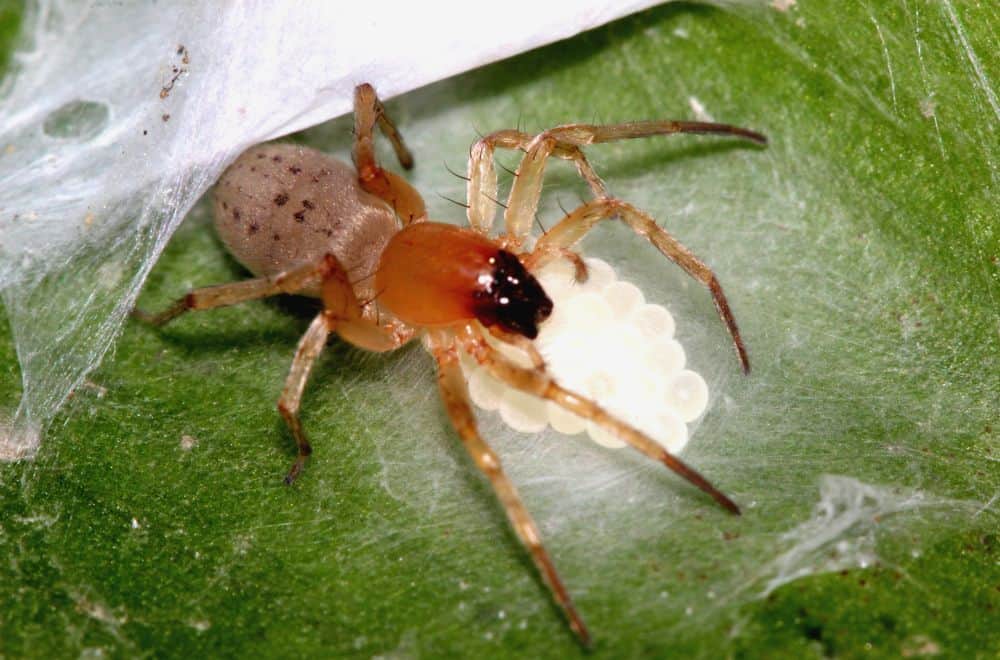As you know, arachnids often use houses as an excellent environment for living, mating, and breeding. Once you spot them, you should know that it is also possible to find spider eggs in the house, primarily in dark, hard-to-reach, and cluttered places.
Since their silky sacs contain hundreds of eggs, you may find yourself in real trouble when newborn arachnids invade your home. Even though most die or move on looking for food, many are always left. Therefore, it is necessary to take steps to eliminate them. Let’s see.
Spider eggs |
||
| Spider type | Number of eggs in one sac | Number of eggs in a sac in a lifetime |
| Wolf spiders | 100+ | 1 to 2 sacs (over 100) |
| Brown recluse spiders | 40 to 50 | 5 sacs (up to 300 eggs) |
| Black widow spiders | 255 | 5 sacs (1,000 eggs) |
| Yellow Sac spiders | 30 to 48 | 5 sacs (150 to 200 eggs) |
| Jumping spiders | 30 to 170 | 6 clutches (200 to 1,000 eggs) |
| Hobo spiders | 50 to 100 | 1 to 4 cases (50 to 400 eggs) |
| Daddy long legs | 50+ (20 to 30 fertilized eggs at a time) | 8 clutches (over 400 eggs) |
| American house spiders | 250 | 17 sacs (over 4,000 eggs) |
| Orb-weaver spiders | 100 to 300 | 1 to 4 sacs (100 to 1,200 eggs) |
Ways to Identify Spider Nests, Sacs, and Eggs
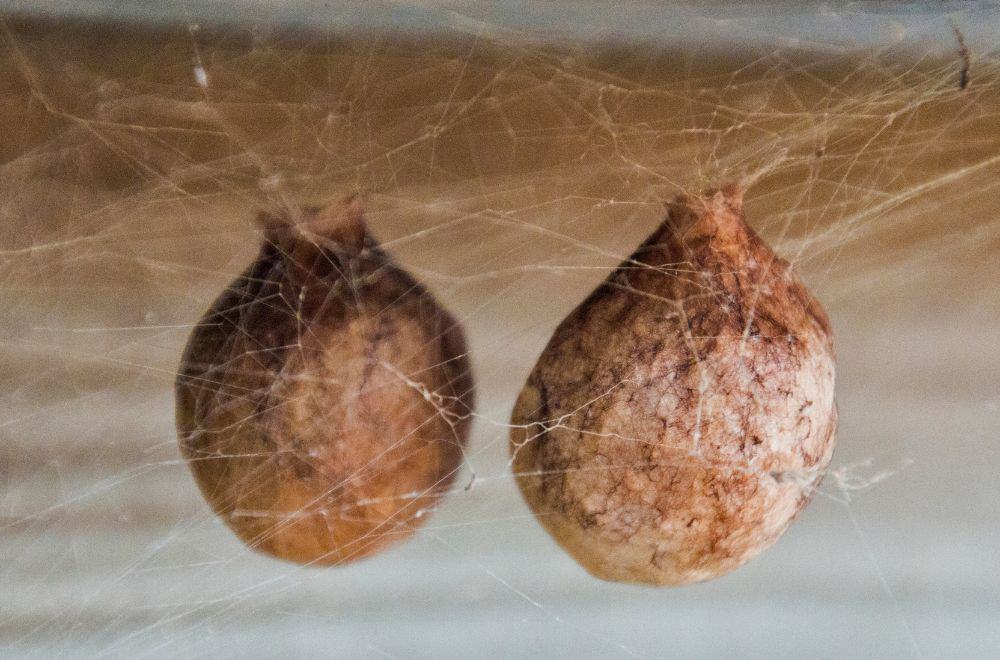
Spider nests
Most nesting spiders build nests in dark corners and dirty, cluttered places so that you can find them in your garage, attic, or basement. You can also spot them outdoors, around trees and bushes. Each nest contains multiple egg sacs with several tens or hundreds of eggs.
Eggs and sac appearance
Most females lay 100 to 4,000 white to cream round or oblong eggs during their lifespan. They are typically 0.01 to 0.07 inches (0.29 – 1.73 mm) in diameter.
Eggs are usually wrapped in tiny white or light-colored, round or oval cocoon-like silky sacs containing about 30 to 300 eggs each. The exact egg number depends on the species, but their survival rate is always low despite these high numbers.
You can recognize flattened sacs in short-legged species, while spiders with long oval abdomens produce elongated sacs. Depending on the species, they can be smooth, or their irregular surfaces contain various bumps or spikes.
For instance, Black widows make perfectly round, fleshy-colored sacs with recognizable tiny spikes on the surface. On the other hand, Daddy long legs make clutches reminding brown grapes.
Sacs are white or brown and have less than 0.25 inches (6.35 mm) in diameter. Their purpose is to help offspring incubate. In some cases, they are small, so females can carry them in the jaw, while some species make sacs larger than their bodies.
Depending on the species, you can find sacs protected in spider webs or hidden in dark locations. Females often place a few sacs in different cluttered places or hidden cracks to protect their offspring from predators.
Spiders are dedicated mothers and take care of their eggs and hatchlings. They rarely separate from sacs protected inside the net, and you can sometimes see them dragging cocoons on a silk thread or carrying them on their backs.
Spider Egg Locations
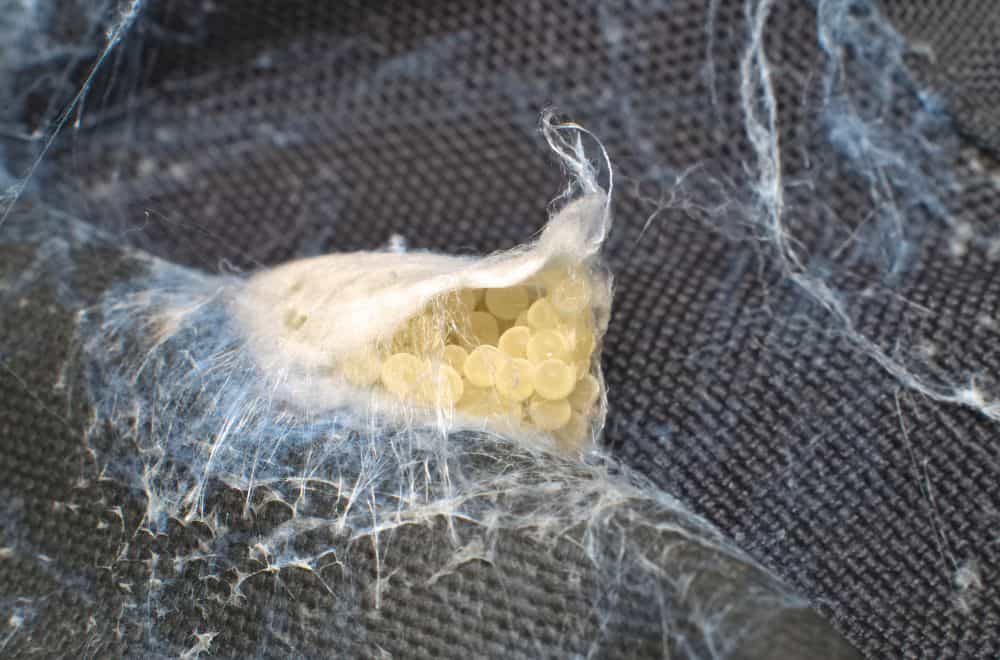
Spiders often look for hidden and protected places to lay eggs. They also like dirty, cluttered spaces with old newspapers and cardboard boxes. Always start looking for the sacs in four primary spots, including:
On the walls
Spiders produce gluey saliva and use them to create silken webs and stick egg sacs on hard surfaces. Some species hide these cocoons inside their nets, while others attach them to wall cracks, thin gaps, or furniture back side.
In cluttered places
Spiders often choose cluttered and dusty places to hide egg sacs. Therefore, you can spot them among the piled and scattered things and boxes in the basement, attic, and storage rooms.
If females lay eggs inside your home, you can find them hidden in cluttered dresser drawers, under couches, cardboard boxes, or the storage box underneath the bed.
On the window
Some species, like Orb-weaver spiders, randomly hook sacs on the openings, like window frames, windowsills, or screens. That can help you see them before hatching and then successfully remove them.
In the yard
There are numerous spots in your backyard where spiders can find ideal places to attach their egg sacs. They always choose spaces near potential food sources, such as:
- On tree branches and under the eaves
- Under stones, broken branches, and fallen leaves
- Inside wood piles and in burrows
- On the leaves’ underside
- In the car trunk or engine compartment
- Inside the camper or on an unused motorcycle
Finally, some species, like Wolf spider females, carry sacs on the abdomen. You can find them crawling in your basement, attic, or outdoors.
Spider Eggs Hatching
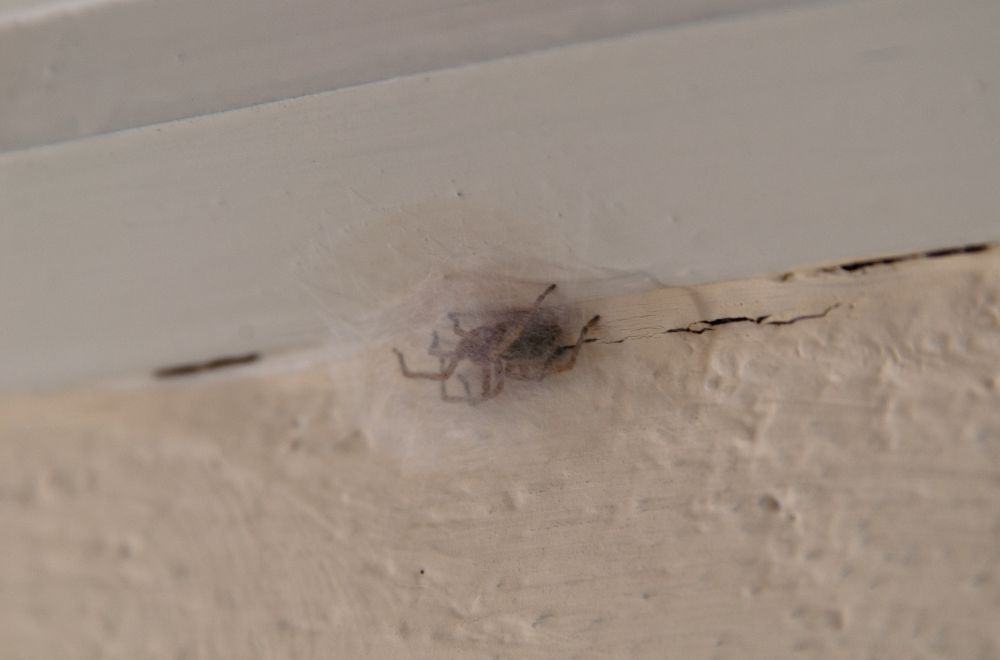
Once a female places eggs in the sac, it takes approximately two to three weeks or several winter months before they hatch, depending on the species and season. Youngs undergo several instars, six for males and seven for females. The first one always takes place inside the sac.
When the moment of hatching comes, tiny and almost translucent babies disperse through the sac by ballooning, allowing them to populate new habitats at longer distances. Most spiders use this method of dispersal, set up silk sacs, and let static electricity or wind spread newborn babies around.
On the other hand, some species keep their offspring protected near their nests for a few weeks. The female spiders’ fate differentiates, depending on species, so they can:
- Die in the fall after producing egg sacs
- Survive the winter and live two to three years
- Sacrifice themselves and serve as food for hatchlings before they leave the sac
Remember that most spiders live only a year or two, and it depends on the following:
- Species
- Period of laying eggs
Those laying eggs in autumn live the shortest with the only goal of preparing a safe place for their offspring.
Ways to Safely Eliminate Spider Eggs
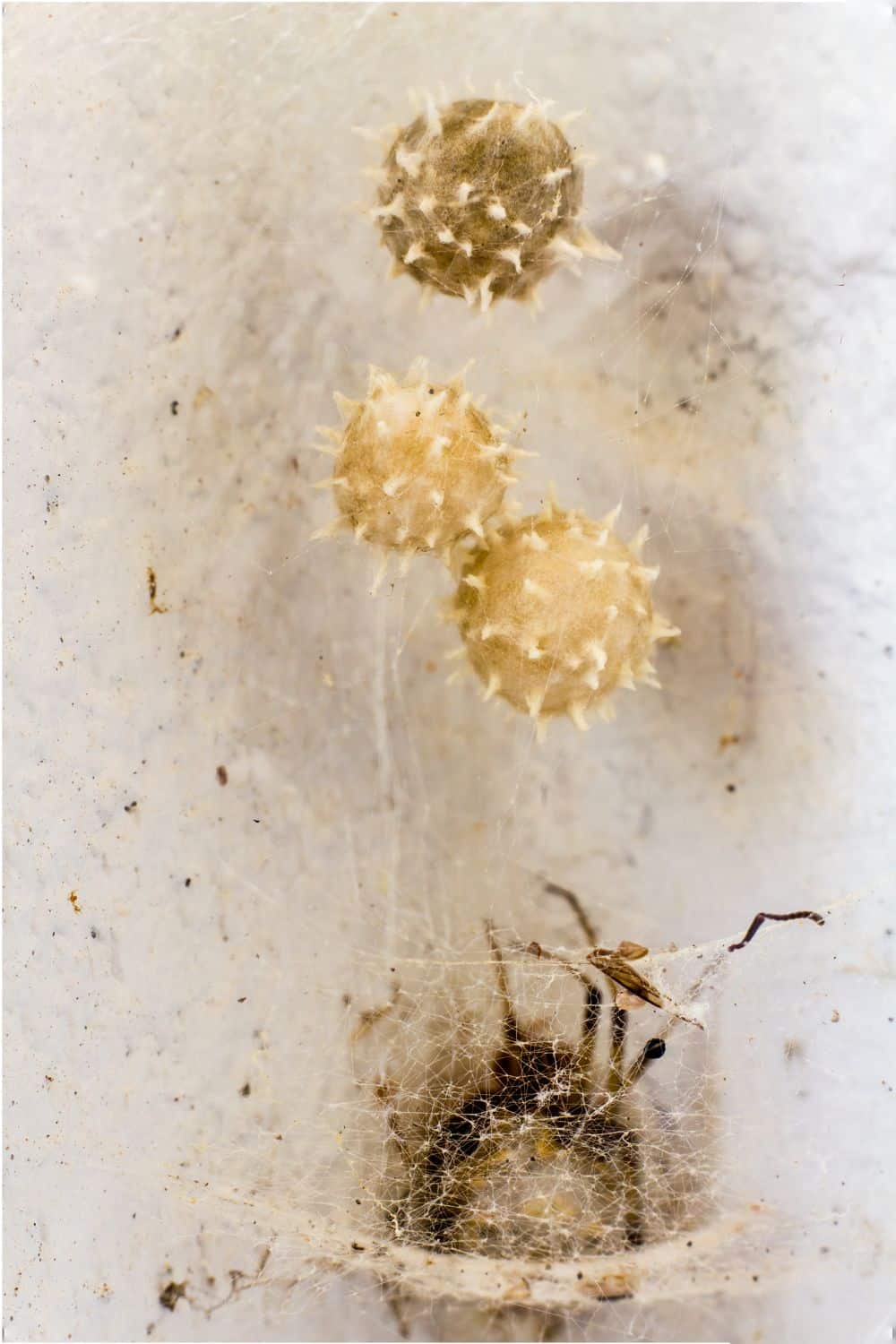
The most efficient way to get rid of spiders in your home is to eliminate their eggs before they hatchling. Be careful and never try to squish the sac to avoid the possibility of spreading young arachnids around the house. There are a few ways to do it correctly, including:
1. Cup and paper
If your goal is not to kill young spiders but only to remove them from your home, you can try this method. Find a sac and gently put it in the cup or a glass.
Cover it with a piece of paper and wait for the mother spider to enter, looking for the offspring. Once it gets in, pick up the cup and dispose of them outdoors, far away from your house.
2. Vacuum cleaner
Vacuuming sucks is efficient but requires removing and discharging the bag from the device after every cleaning. Otherwise, you will see young spiders crawling from it and spreading throughout the house.
Another issue is sacs with viable eggs. Be careful to avoid their splitting, resulting in spreading the young all around.
Use a vacuum cleaner to remove sacs placed behind the furniture, boxes, and storage compartments, but never in too-tight places. If you have dangerous species inside, an efficient solution to kill hatchlings is to freeze the sac or soak it in a bucket of soapy water.
3. Fly swatter
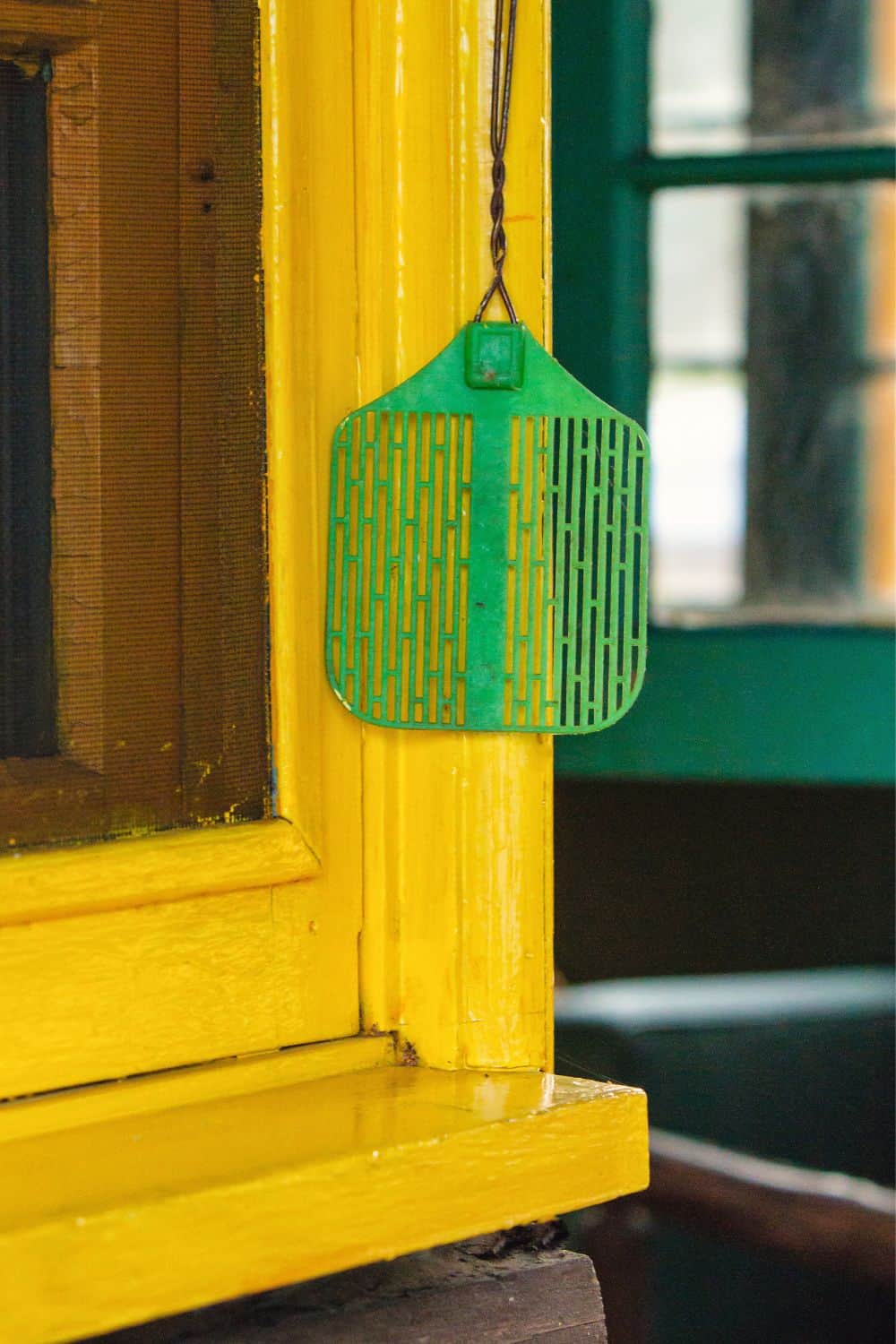
You can efficiently kill non-venomous spiders with a fly swatter and then collect sacs in a plastic bag and throw them away. Avoid this method when dealing with poisonous Brown recluse spiders or Black widows to prevent stinging you.
4. Duster head
You can use a simple duster head like Cobb Webb Duster Head to remove egg sacs from hard-to-reach areas. This product is also highly efficient in eliminating spider nets.
5. Boiling water
Spider egg sacs and their hatchlings can’t survive contact with boiling water. The only thing to do is to pour hot water over the nest or sac. The disadvantage of this method is that it is impossible to apply it indoors without destroying the furniture or the floor.
6. Bleach and water mixture
This mixture is excellent for neutralizing spider sacs placed in tight, hard-to-reach places. Make a bleach and warm water solution in a 50: 50 ratio and stir it carefully. Then, pour it into a spray bottle and spray over all wall cracks and crevices with hidden sacs.
Bleach is highly toxic to spiders, so you can expect it to destroy sacs and adults within five minutes. Take care to protect yourself and prevent this corrosive agent from reaching your eyes and skin. Additionally, bleach can ruin colorful fabrics, upholstery, and wallpapers.
7. Essential oils

Essential oils are proven spider repellents, so you should pick out one and apply it in your home. You can expect the best results with the following:
- Peppermint oil
- Cedar oil
- Tea tree oil
- Lemon oil
- Orange oil
- Olive oil
There are two options to apply them. You can drip the chosen oil near spider webs or spray a water mix on an egg sac.
8. Pest predators
This eco-friendly way to keep the spider population under control requires bringing their predators inside your home.
The best possibility is to use your reptile pet that feeds on arachnids. Another option is to tolerate centipedes while preying on arachnids and then figure out what to do with them once the spiders are gone.
9. Spider spray
Chemicals are never the recommended solution since these products can harm kids and pets. You should use them only when the infestation is too high, and you have exhausted all other options.
A quality oil-based product will destroy these soft-bodied creatures and their webs. Additionally, some products with a long-term delayed effect will remain effective for months. In other words, they will prevent arachnids from laying eggs in a sprayed spot during that period.
You can also buy one reliable commercial spider spray, like Web Out and Terro, and spray it directly on the egg sac. A highly efficient Miss Muffet’s Revenge kills spiders and prevents them from returning for about a year, while Harris Spider Killer is entirely odorless.
Whatever product you choose, it will take approximately 10 to 15 minutes to finish the job. The only thing to do is to vacuum neutralized sacs and dead adults afterward.
10. Insecticides
If the spider infestation is out of control, you should take more severe steps. One of the solutions is to use a potent insecticide and spray it along the corners, eaves, windows, and doors. That way, you will destroy adults, webs, and sacs placed outdoors and prevent spiders from entering your home.
11. Professional pest control
Calling qualified pest control specialists is an excellent way to get rid of massive spider infestation. These professionals also know how to deal with dangerous and toxic species that can hurt you or cause severe allergic reactions.
Ways to Prevent Spiders From Laying Eggs in the House

Some spiders are beneficial in the garden or backyard since they feed on pest insects, like fleas, mosquitoes, and cockroaches. On the other hand, their presence inside your home can be annoying and even dangerous, depending on the settled species.
Preventing them from entering is more efficient and affordable than their elimination when the infestation level becomes unbearable. So, let’s look for the best method of prevention you can choose.
- Clear debris and reduce the clutter in the yard, garage, and outbuildings
- Trim tree branches and hedges in the backyard
- Never keep mulch, woodpiles, compost, and rocks near the house
- Keep gardening gloves, equipment, and clothes properly stored
- Seal wall cracks
- Apply essential oils at entry points to repel spiders
- Turn off unnecessary lighting on the porch
- Keep food protected in airtight boxes and bags
- Schedule regular professional pest control
Summary
Finding egg sacs in your home is a sure sign that you are faced with arachnid infestation. Since one female can lay several hundred eggs at once, you should react immediately. Fortunately, there are a few possible solutions, including hiring pest control professionals as an ultimate and highly efficient option.
